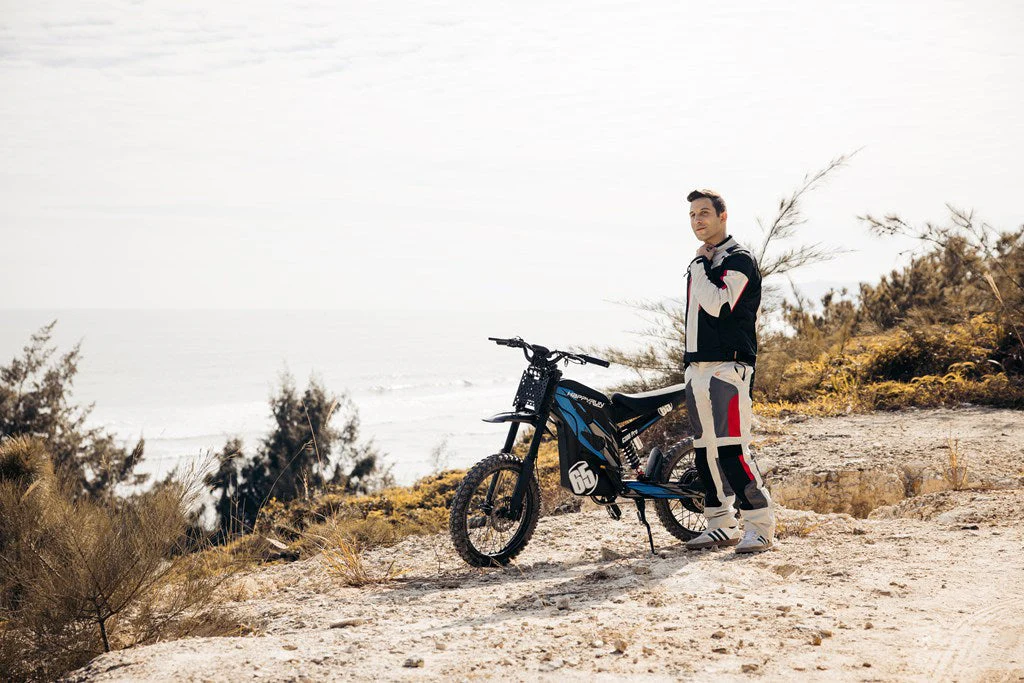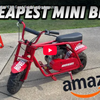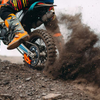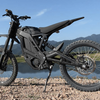How Much Does an Electric Dirt Bike Weigh? Comparison Charts & Why It Matters

If you’re asking how much does an electric dirt bike weigh, you’re already thinking like a smart buyer. Weight decides how a bike feels at walking speed, how it flicks through tight trees, how quickly it stops, how far it goes per charge, and whether you can lift it into a van by yourself. Electric dirt bikes span a wide spectrum: tiny 36V minis for kids that you can carry with one hand, lightweight 60V trail rockets that ride like mountain bikes with throttles, and full-size off-road machines with huge batteries for open country.
Each category carries a different “weight story,” and knowing these numbers up front saves you from buying a bike that’s too heavy to enjoy or too light for your terrain.
Below you’ll find simple comparison charts that group typical curb weights by category, explain the parts that add the most mass (battery and chassis), and show what those pounds or kilos actually mean on the trail. You’ll also learn how weight interacts with range, braking distance, and transport, plus pragmatic tips to trim pounds without breaking the bike.
Finally, we answer the most common questions riders ask about weight, including what “curb weight” means on an e-moto and how much a new rider should realistically manage. Use this guide to pick a machine that matches your size, your trails, and your day-to-day life—not just a spec sheet.
Curb Weight vs Dry Weight (and why the first one matters)
Gas bikes often list “dry weight” (no fuel or fluids). Electric dirt bikes don’t have gas, but they do have a battery—and that’s the heaviest single component on the bike. For e-motos, the only number that matters day to day is curb weight: the ready-to-ride mass including the battery. When you compare models, make sure you’re not mixing curb weight from one brand with a battery-excluded figure from another, or you’ll be off by 15–35 lb (7–16 kg) instantly.
Category Comparison: Typical Curb Weights
Table 1 — Typical ready-to-ride weights by class
|
Category |
Voltage / Use |
Typical Curb Weight (lb) |
Typical Curb Weight (kg) |
What it feels like |
|
Kids’ mini (36V) |
Backyard, beginner trails |
45–70 lb |
20–32 kg |
Easy to lift, confidence for small riders |
|
Youth/teen 36V (500–1000W) |
Park loops, mellow dirt |
55–85 lb |
25–39 kg |
Manageable for kids; adults can carry |
|
Lightweight trail (60V class) |
Adult singletrack “play” |
115–135 lb |
52–61 kg |
Flickable, MTB-with-a-motor vibe |
|
Mid/hi-output trail (72V+) |
Steeper terrain, heavier riders |
125–155 lb |
57–70 kg |
Stronger punch; still maneuverable |
|
Full-size off-road e-dirt |
Desert, long dirt roads |
200–300 lb |
91–136 kg |
Planted at speed; less nimble in trees |
|
Premium MX-oriented electric |
Track-first chassis |
230–260 lb |
104–118 kg |
Race feel; suspension and brakes shine |
These ranges are representative, not one-brand claims. They’re here to frame expectations so you can pick a lane before you dive into specific models and trims.
Why Weight Matters on the Trail

Low-speed balance and confidence
At walking pace, every pound counts. New riders, shorter riders, and anyone who dabs a foot often will notice the difference between a 120 lb trail e-moto and a 250 lb full-size chassis immediately. If you ride rooty, stop-and-go singletrack, lighter is usually happier.
Direction changes and fatigue
A bike that sits in the 115–135 lb window changes direction with minimal input. That reduces arm pump and extends your fun window. Heavier e-dirt bikes calm high-speed chop and land jumps straighter, but they’re more work in tight trees.
Stopping distance and brakes
Mass = momentum. Heavier bikes demand stronger brakes and better tires to stop in the same distance. If you’re choosing between two options at the same price, pick the one with better brakes before chasing 2 more mph up top.
Range per charge
More battery can add more range, but more weight also takes more energy to accelerate and climb. Lightweight 60V bikes often deliver the best miles-per-watt-hour in tight terrain because you’re not constantly throwing extra mass around.
Transport and storage
Ask yourself two practical questions: can you roll it up a ramp solo, and can you safely hang it on your hitch rack? For many riders, the difference between 125 lb and 200+ lb is the difference between riding three nights a week or leaving the bike at home.
What Adds (or Saves) Weight on an Electric Dirt Bike

Battery pack (biggest lever)
Capacity measured in watt-hours is the main weight driver. A small 36V pack for kids can weigh under 10 lb (4.5 kg). Adult packs with serious capacity can exceed 35–45 lb (16–20 kg). Chemistry and packaging matter, but capacity rules the scale.
Frame and chassis
Aluminum perimeter frames and forged triple clamps keep weight tight. Steel frames add durability and predictable flex, often at a slight mass penalty. Full-size chassis carry longer swingarms, heavier wheels, and larger brakes.
Suspension and brakes
Fork stanchion diameter, shock bodies, and rotor size add grams that you’ll feel as planted braking and better heat management. Mid-tier components can save a pound or two without giving up reliability.
Wheels and tires
Heavier wheels hurt acceleration and turn-in more than their static mass suggests, because they’re rotating mass. A lighter wheel/tire combo makes a nimble bike feel instantly more playful.
Protection and accessories
Skid plates, handguards, chains guides, racks, and lighting kits can add 1–6 lb (0.5–3 kg). Add what you truly need for your terrain, then weigh the trade-off.
Which Weight Is “Right” For You? A Fit-First Framework
Table 2 — Rider profile to weight sweet-spot
|
Rider / Use |
Ideal Weight Window |
Why this works |
|
New adult rider, tight woods |
115–135 lb |
Easy to balance, quick to learn core skills |
|
Veteran trail rider, mixed terrain |
125–150 lb |
Stability at speed without losing playfulness |
|
Big desert days, open terrain |
200–260 lb |
Battery depth and planted chassis matter most |
|
Kids under ~120 lb, first bike |
45–70 lb |
Manageable size; safe speeds; simple control |
|
Teens stepping up |
55–85 lb (36V) or 115–135 lb (60V) |
Progression without intimidation |
If you’re between categories, pick the lighter option first. Confidence beats spec sheets, and you can always step up once skills (and trails) demand it.
How Weight Interacts With Range and Gearing

A quick thought experiment: two bikes with the same battery, but one is 25 lb heavier. In stop-and-go singletrack, the lighter bike often goes farther because you’re accelerating less mass hundreds of times per ride. On smooth dirt roads at a steady speed, weight matters less than aero, rolling resistance, and gearing. If range anxiety is real where you ride, favor lighter bikes with efficient tires and a charger plan over simply buying “more battery.”
Gearing changes the feel, too. Shorter gearing helps climbs and wheel control but can raise cruising rpm and reduce efficiency. Taller gearing does the opposite. Most modern controllers add ride modes so you can keep the battery curve friendly on transfers and open it up for tech sections.
Practical Weight Tips: Trim Pounds, Keep Strength
Choose tires for the day. Low-rolling-resistance treads on hardpack save energy and lighten steering feel. Aggressive knobs belong in loam and mud.
Mind your wheelset. A lighter wheel/tire combo lifts handling more than the scale suggests because you trim rotating mass.
Don’t over-armor. Use protection where you need it (case saver, skid where rocks bite), skip the rest.
Clean the drivetrain. A dirty chain wastes energy and makes any bike feel heavier.
Stay realistic. A battery “diet” is rarely worth it; batteries are engineered as a system. Focus on contact points and setup first.
Example: Kids’ 36V Mini Weight in Context
A kids’ 36V mini e-dirt bike usually lands in the 45–70 lb range depending on motor, battery, wheels, and frame. That’s light enough for an adult to lift and for a young rider to maneuver without drama. It keeps speeds sensible, and it’s perfect for supervised yard practice and family OHV loops. For a concrete size and control reference you can point parents to once in your site flow, anchor “36V mini electric dirt bike” to your product page so they can visualize seat height, brake layout, and a realistic weight in this class.
Charts You Can Screenshot for Shoppers
Table 3 — Weight vs. handling summary
|
Weight band |
Typical category |
Handling feel |
Best for |
|
45–70 lb |
36V mini |
Ultra-easy balance |
First rides, small spaces |
|
55–85 lb |
Youth 36V |
Youth control + fun |
Parks, mellow trails |
|
115–135 lb |
60V lightweight |
Flickable, low fatigue |
Tight singletrack |
|
125–155 lb |
72V trail |
Strong punch, composed |
Steeper terrain |
|
200–300 lb |
Full-size |
Planted at speed |
Desert, long loops |
Table 4 — Transport considerations by weight
|
Bike weight |
Solo van loading |
Hitch rack reality |
Notes |
|
≤ 85 lb |
One-hand lift possible |
Most 2-bike racks OK |
Strap wheels; lock frame |
|
115–135 lb |
Roll up ramp solo |
Heavy-duty single OK |
Mind rack tongue weight |
|
150–200 lb |
Two-person safer |
HD single only |
Check vehicle hitch rating |
|
≥ 200 lb |
Two-person or winch |
Consider trailer |
Safer with track or trailer |
Frequently Asked Questions (People Also Ask)
How much does an electric dirt bike weigh for adults?
Most adult-focused lightweight trail e-motos fall between about 115 and 135 pounds ready to ride. Mid and high-output trail bikes in the 72V class commonly sit in the 125 to 155 pound band, while full-size off-road electrics with big batteries can weigh 200 to 300 pounds depending on chassis and component choices.
How much does an electric dirt bike weigh for kids?
A typical kids’ 36V mini ranges from roughly 45 to 70 pounds curb weight. Youth-size 36V bikes with bigger wheels or 1000W motors can approach 80 to 85 pounds, still manageable for supervised use on smooth dirt and backyards.
Is heavier always worse for range?
Extra pounds hurt most in stop-and-go riding where you accelerate constantly. On smooth dirt roads at a steady speed, weight matters less than tires, aero posture, and gearing. Many riders find that a lighter 60V bike with efficient tires and a sane ride mode goes farther in tight woods than a heavier machine with a larger pack.
What’s more important—weight or suspension?
They work together. A sub-130 pound trail bike with poor suspension can feel skittish, while a 140-plus pound bike with well-tuned suspension can feel composed and confidence-building. If you must choose, prioritize suspension and brakes within your target weight window, then fine-tune with tires and setup.
Can I realistically lift a lightweight adult e-dirt bike into a van alone?
Most riders can roll a 115 to 135 pound bike up a ramp solo with proper technique. Once you’re over about 150 pounds, a second person, a winch ramp, or a trailer makes loading safer and saves your back. Always check hitch and rack ratings if you carry a bike on the bumper.
Conclusion
Weight is not just a number on a spec sheet; it’s the feel of every corner, the calm of every landing, and the length of every ride. If your riding is tight singletrack and after-work laps, the 115–135 lb lightweight trail class is where most adults find joy: easy to balance, simple to load, and efficient enough to stretch a charge.
If your terrain is steeper or you want more headroom, the 125–155 lb range of 72V trail bikes adds punch without turning the bike into a handful. For big-sky days and long dirt roads, a 200–300 lb full-size electric’s planted chassis and larger battery can make the day feel effortless, provided you accept the extra mass in tight spaces.
When you compare models, insist on curb weight with the battery installed, scan the brake and suspension spec before chasing top speed, and think honestly about how you’ll transport the bike. Small choices—lighter wheels, appropriate tires, tidy protection, and a clean drivetrain—make any platform feel lighter on the trail.
If you’re choosing for a young rider, keep it simple: a 45–70 lb 36V mini builds skills without intimidation and keeps family rides fun. Match the weight to the rider and the terrain, and you’ll bring home a bike that feels right the first day and even better on the hundredth.




